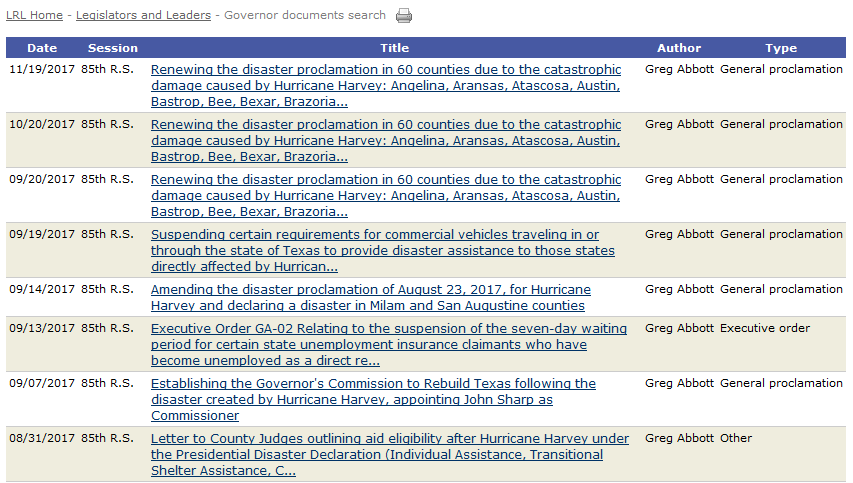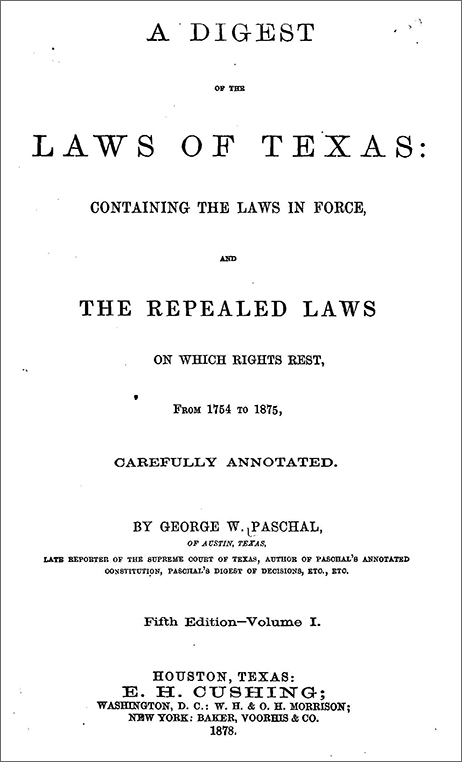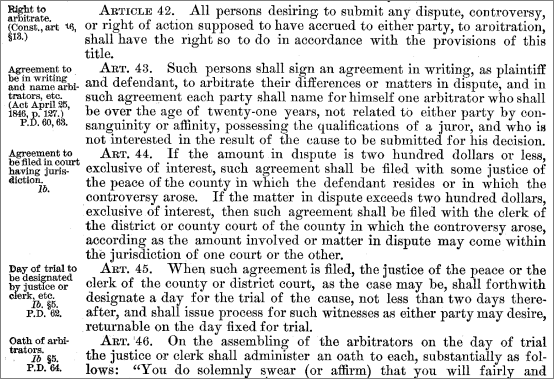- Commission to Rebuild Texas: Issue 13, Housing, The Governor's Commission to Rebuild Texas, December 15, 2017
- "How Much Damage Did Harvey Do to Texas Homes? There May Never Be an Exact Answer," Texas Tribune, November 22, 2017
- Interim Report to the 85th Texas Legislature (Charge 1, Hazard mitigation and natural disaster response), House Committee on County Affairs (joint charge with House Committee on Urban Affairs), January 2017
- Interim Report to the 85th Texas Legislature (Charge 1, Natural disaster preparedness), House Committee on State Affairs, January 2017
- Interim Report to the 85th Texas Legislature (Charge 1, Disaster preparedness planning), House Committee on Homeland Security and Public Safety, December 2016
- Interim Report to the 85th Texas Legislature (Charge 1, State preparedness and response to natural disasters), House Committee on Land & Resource Management, December 2016
- Interim Report to the 85th Legislature (Charge 3, Disaster preparedness planning and coordination, background on process to rebuild housing and efficiency of disaster recovery), Senate Committee on Intergovernmental Relations, November 2016
- State Agency Property: Recommended Transactions, Reports to the Governor, Texas General Land Office
- Real Property Evaluation Reports, Texas General Land Office
- Texas Rebuilds, Texas General Land Office
- Review statistics related to the country's southern border. (U.S. Customs and Border Protection, December 5, 2017)
- Read about the costs of the Trump Administration's goals for the military. (Congressional Budget Office, December 4, 2017)
- Consider the legal aspects of shared parenting. (The Washington Post, December 11, 2017)
- Explore the stunning images from the 2017 National Geographic Nature Photographer of the Year submissions. (National Geographic, ©2017)
- "The state of manufacturing." By Evan Hoopfer. Dallas Business Journal, November 24, 2017, pp. 4-6.
Discusses the growth in manufacturing jobs and tracks how North Texas compares to its national and state counterparts. - "Disaster relief: defrauding the do-gooders." Economist, November 25th-December 1st, 2017, pp. 55-56.
Reports countries are becoming more active in seeking to uncover and punish fraud related to humanitarian aid and natural and man-made disasters. - "Mental health: me, myself and iPhone." Economist, November 25th-December 1st, 2017, pp. 26, 28.
Considers whether the current increase in the suicide rate among 15-to-19-year-olds coincides with the rise of social media and the time spent staring at phone screens. - "Why the Republican tax plans do nothing to help genuine small businesses." By Hunter Blair. EPI Issue Brief, November 29, 2017, pp. 1-8.
Rebuts claims that Republican tax plans will help small businesses by lowering top tax rates on "pass-through" income. Explains the relationship between pass-through businesses and small businesses.
See: http://www.epi.org/files/pdf/138390.pdf - "Making a case for sanctuary hospitals." By Altaf Saadi, Sameer Ahmed, and Mitchell H. Katz. JAMA (Journal of the American Medical Association), December 5, 2017, pp. 2079-2080.
Argues that hospitals should develop clear sanctuary policies so community members can seek medical care regardless of their immigration status. Highlights several Texas anecdotes in which patients were targeted by United States Immigration and Customs Enforcement [ICE] agents. - "The success of state newborn screening policies for critical congenital heart disease." By Alex R. Kemper, Wendy K.K. Lam, and Joseph A. Bocchini Jr. JAMA (Journal of the American Medical Association), December 5, 2017, pp. 2087-2088.
Reports that statewide implementation of mandatory newborn screening policies for critical congenital heart disease was associated with a significant decrease in infant cardiac deaths between 2007 and 2013. - "Electricity or natural gas: which holds the real price advantage?" By Mark Beyer. Public Utilities Fortnightly, December 2017, pp. 48-49.
Compares the price advantages of electricity and natural gas. - "How does innovation impact customers?: no two are alike." By Sheri Givens. Public Utilities Fortnightly, November 2017, pp. 16-18.
Considers how innovations impact residential utility customers. Suggests ways for utilities to accommodate innovations based on different customer preferences. - "For foster care kids, college degrees are elusive." By Teresa Wiltz. Stateline (Pew Charitable Trusts), December 7, 2017, pp. 1-4.
Reports on state programs that help foster care youth get into and through college or vocational school.
See: http://www.pewtrusts.org/en/research-and-analysis/blogs/stateline/2017/12/07/for-foster-care-kids-college-degrees-are-elusive - "More protection for property owners: how TAB influenced policy to protect homeowners during the 85th First Called Special Session." By Eddie Martin. Texas Builder, November/December 2017, pp. 23-24.
Discusses efforts of the Texas Association of Builders relating to the home building industry and property rights in the 85th Legislature, 1st C.S., specifically relating to HB7 (tree credits for mitigation fees) and SB6 (annexation).
See: http://www.texasbuilders.org/site/publisher/files/TXBuilder_NovDec17_FINAL.pdf#page=23 - "Overcoming the storm." By Lorraine Urey. Texas Builder, November/December 2017, pp. 12-16.
Surveys Hurricane Harvey's damage to Texas homes and describes the main obstacle facing the rebuilding effort: a skilled construction labor shortage. Mentions recent education reform in HB5, 83rd Legislature, R.S., allowing students to earn construction industry or trade certifications.
See: http://www.texasbuilders.org/site/publisher/files/TXBuilder_NovDec17_FINAL.pdf#page=12 - "A slap at employment law?" By W. Gary Fowler. Texas Lawyer, December 2017, pp. 24-25.
Comments on recent court decisions concerning the impact of the Texas Citizens Participation Act on employment law issues such as defamation and trade secrets. Notes the law was enacted by HB2973, 82nd Legislature, R.S., as a way to prevent lawsuits that deter free speech. - "Giving up the gavel: after five terms as House speaker, Joe Straus calls it quits." By R.G. Ratcliffe. Texas Monthly, December 2017, pp. 54, 56.
Offers Speaker Joe Straus' thoughts on why he decided not to run for reelection, what it takes to achieve success as Speaker, and whether he might be open to running for statewide office. - "An 87-year-old nun said she was raped in her nursing home. here’s why she couldn't sue." By Haley Sweetland Edwards. Time, November 27, 2017, pp. 54-59.
Reports an increasing number of nursing homes are requiring incoming residents to sign arbitration agreements as a condition of admission. Notes residents are often unaware they have relinquished their legal rights to have claims of negligence and criminal conduct heard in court. Addresses an arbitration case involving rape.
See: http://time.com/5027063/87-year-old-nun-said-she-was-raped-in-her-nursing-home/
Check out and delivery of New & Noteworthy titles is available to legislative staff in Capitol and District offices. To arrange check out and delivery of any of these items, you can submit an online request through the New & Noteworthy page on our website, contact the library at 512-463-1252, or use our PDF request form.
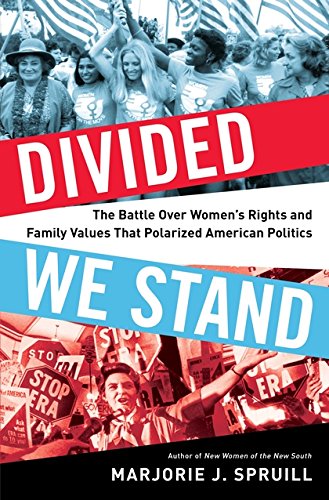
1. Divided We Stand: The Battle Over Women's Rights and Family Values That Polarized American Politics
By Marjorie Julian Spruill
Details the feminist National Women’s Conference and the conservative Pro-Life, Pro-Family Rally held simultaneously in Houston in November 1977. Describes the political figures and policy decisions that led to these conflicting events. Argues that the push and pull of these opposing women’s movements have played a key role in shaping our current political environment.
Bloomsbury, 2017. 436 pages.
305.4 SP88D 2017
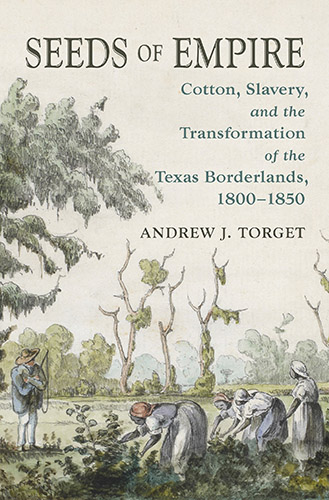
2. Seeds of Empire: Cotton, Slavery, and the Transformation of the Texas Borderlands, 1800-1850
By Andrew J. Torget
Chronicles how Mexicans, Indians, Anglo-Americans, Europeans, and African Americans competed for space and power in the Texas borderlands, with the Atlantic cotton economy—and its reliance on slavery—being a driving force. Argues that the Republic of Texas was not simply a rebellion from Mexico but was also a “dress rehearsal” for the Confederacy and an attempt to build a cotton empire along the Gulf Coast of North America.
University of North Carolina Press, 2015. 353 pages.
338.1 T632S 2015
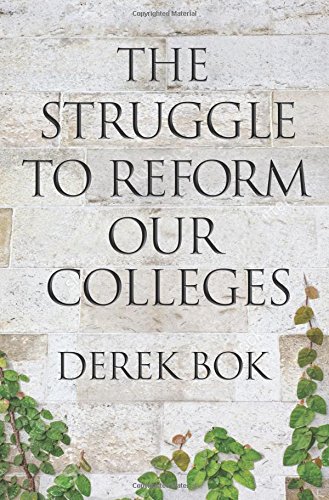
3. The Struggle to Reform Our Colleges
By Derek Curtis Bok
Examines the shortcomings of U.S. colleges, from disparities in the quality of education to racial/socioeconomic stratification to high costs, and the slow progress in addressing these challenges. Identifies initiatives and strategies that the author, a former president of Harvard University, believes would improve accountability, innovation, and the pace of reform.
Princeton University Press, 2017. 228 pages.
378.73 B637S 2017
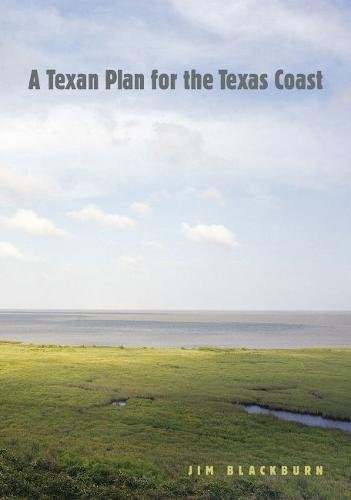
4. A Texan Plan for the Texas Coast
By Jim Blackburn
Presents a Texas coastal protection solution that conserves natural resources and the long-term health and beauty of the coast, while encouraging economic growth and entrepreneurship, supporting the oil and gas industry, and valuing the traditions of the agricultural and ranching communities on the coast. Describes the assets of the Texas coast as "green" (natural ecological systems), "gray" (industrial and development infrastructure), and water. Includes recommendations on hurricane preparedness, surge flood prevention, and levee systems.
Texas A & M University Press, 2017. 305 pages.
976.4 B562T 2017
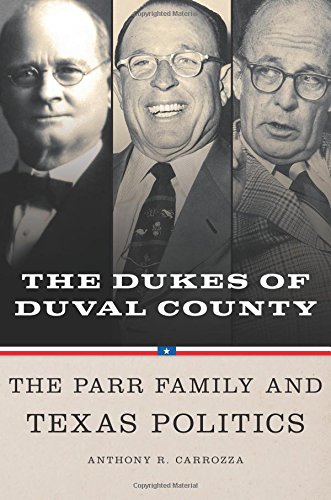
5. The Dukes of Duval County: The Parr Family and Texas Politics
By Anthony Carrozza
Examines the Parr family dynasty that swayed local and state elections primarily in Duval County but also across South Texas for over half a century. Documents how the Parrs, including former Texas Senator Archie Parr, rose to prominence from wealthy land owners to county and state officials who influenced Texas politics, including the election of Lyndon B. Johnson to the U.S. Senate. Explores how the Parr family was able to use its power and influence to avoid jail terms and justice until its regime ended in the 1970s.
University of Oklahoma Press, 2017. 427 pages.
976.4 C237D 2017
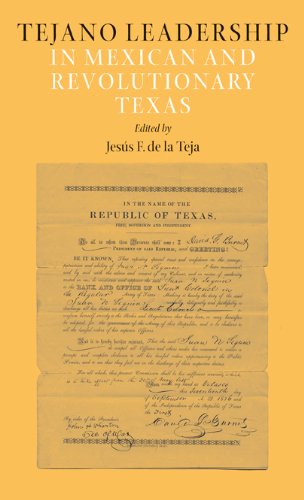
6. Tejano Leadership in Mexican and Revolutionary Texas
By Jesus F. de la Teja, ed.
Presents a collection of essays on the lives and careers of prominent as well as lesser-known but historically significant Tejano leaders and their role in the formation of Texas. Features José Antonio Navarro, Juan Seguín, and Plácido Benavides along with their little-known counterparts, including Father Refugio de la Garza, Juan Martín Veramendi, José Antonio Saucedo, Raphael Manchola, and Carlos de la Garza.
Texas A&M University Press, 2010. 252 pages.
976.4 T235T 2010

7. Tainted Breeze: The Great Hanging at Gainesville, Texas, 1862
By Richard B. McCaslin
Recounts the hanging of more than 42 alleged Unionist prisoners by the Citizens Court in Gainesville and the lynching of more prisoners in surrounding communities during the Civil War. Attributes a tradition of violence and vigilantism in North Texas, along with economic conditions and family relationships, as contributing factors to this dramatic event. Explores why those responsible for the Great Hanging were never prosecuted and why violence against families accused of Unionism continued long after the war ended.
Louisiana State University Press, 1994. 234 pages.
976.4 M128T 1994
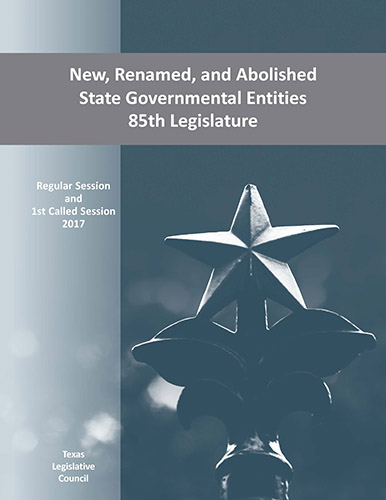
8. New, Renamed, and Abolished State Government Entities: 85th Legislature
By Texas Legislative Council
Reports on state government agencies, interagency panels, advisory committees, and other state governmental entities created, restructured, or eliminated by legislation enacted in the 85th Legislature. Provides information about each entity, including the bill number and specific bill sections that contain provisions pertaining to the entity, effective dates, powers and duties of the entity or whether certain functions were transferred to another entity, membership information, and Sunset or expiration dates.
Texas Legislative Council, 2017. 41 pages.
Online at: http://www.tlc.state.tx.us/docs/sessions/85GovEntities.pdf
L1400.8 N42 2017
Session for the Holidays
Dec 12
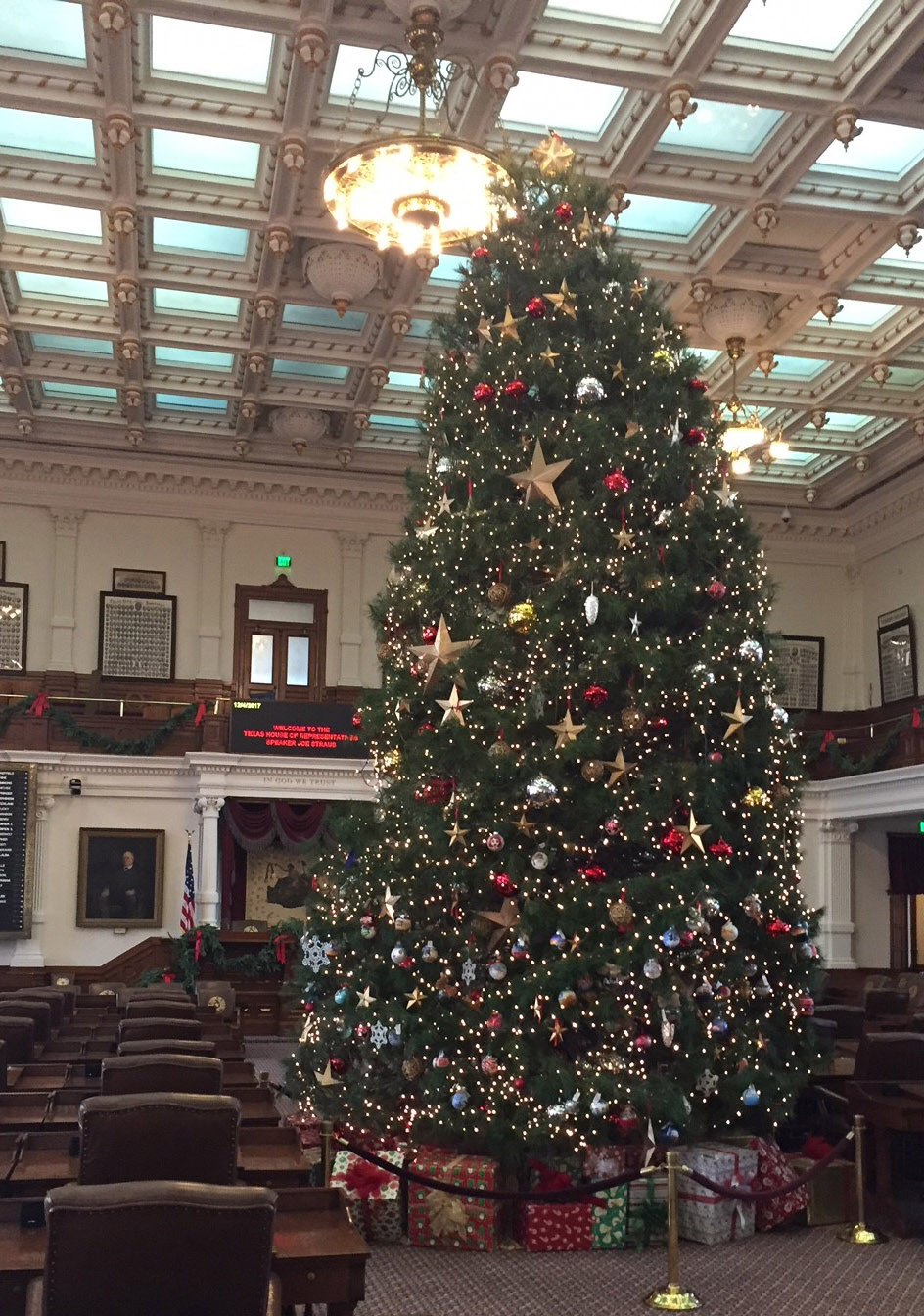
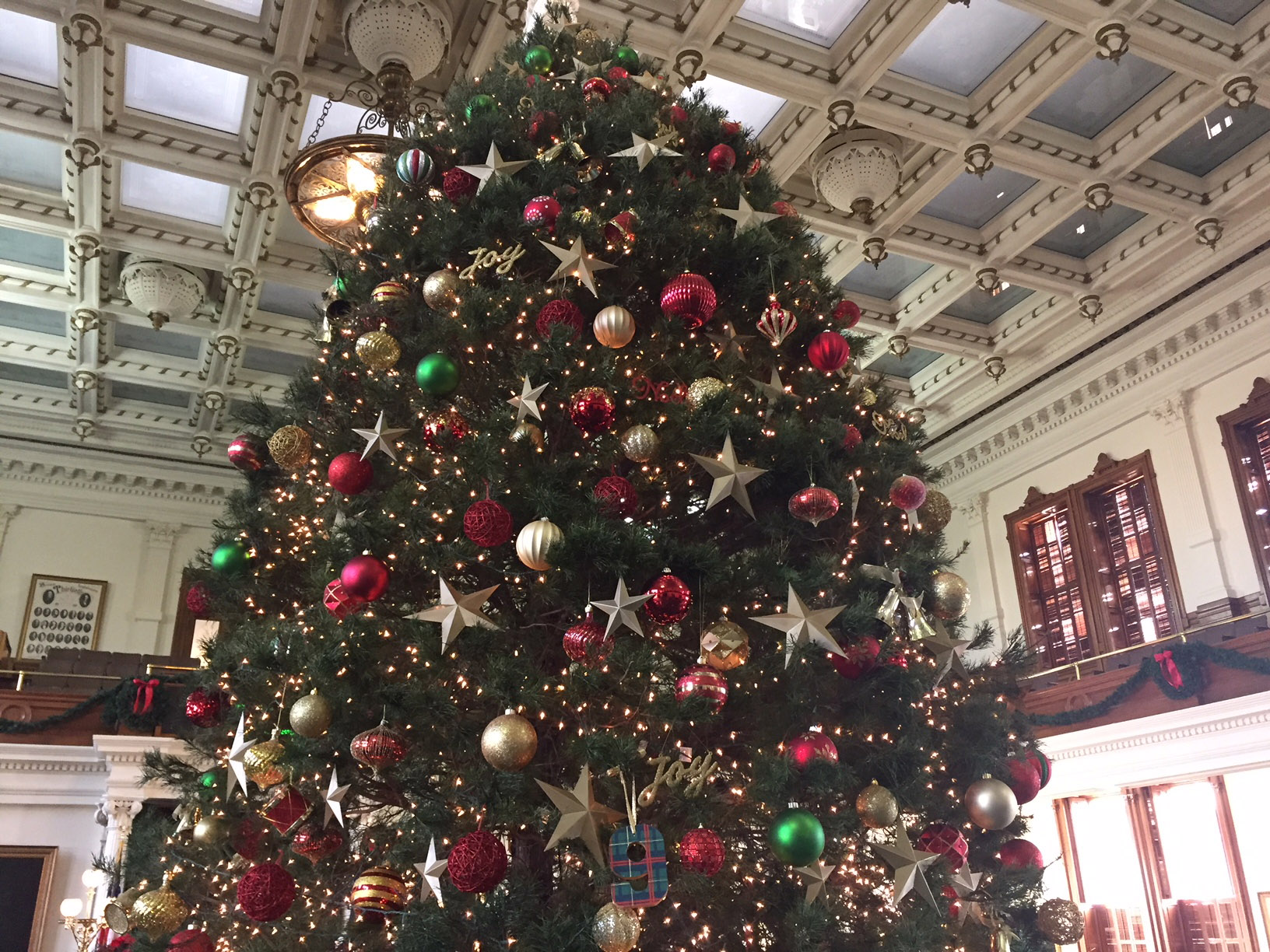
- Consider new flexibility granted to the states for operating food stamp programs. (Politico, December 5, 2017)
- Read about amicus briefs filed for Masterpiece Cakeshop v. Colorado Civil Rights Commission. (Heritage Foundation, December 5, 2017)
- Explore how new technologies can help manage diabetes. (National Institutes of Health, December 2017)
- Find resources related to vaccinating against and tracking the flu in Texas. (Texas Department of State Health Services, last updated October 9, 2017)
- "Guardian of the vote." By Jill Leovy. Atlantic Monthly, December 2017, pp. 16, 18, 20.
Reports on Barbara Simons and her work with the nonprofit, Verified Voting, and their goal of getting paper ballots in every state to combat the vulnerability of electronic systems.
(See: https://www.theatlantic.com/magazine/archive/2017/12/guardian-of-the-vote/544155/) - "Unnatural disaster." By Shannon Sims. Bloomberg Businessweek, November 20, 2017, pp. 52-59.
Examines the legal aspects of flood control measures implemented in west Houston during Hurricane Harvey. Quotes Senator Joan Huffman. - "The scholars behind the quest for reparations." By Marc Parry. Chronicle of Higher Education, November 17, 2017, pp. A14-A16.
Highlights the work of Hilary Beckles and other historians as they seek reparations for slavery. Explains new scholarship focuses on the role slavery played in the development of American capitalism. - "Emergency management." By Andrew Siddons. CQ Weekly, November 13, 2017, pp. 24-28.
Discusses the current opioid crisis in the United States. Examines how Scott Gottlieb, the new commissioner of the Food and Drug Administration [FDA], plans to address the crisis. - "Wages: great again." Economist, November 18th-24th, 2017, pp. 23-24.
Discusses the surge in wages for workers in blue-collar occupations. Notes the acceleration in manufacturing employment this year in Texas and surrounding oil states. - "Health IT in Texas: the doctor is ... online." By Lauren Mulverhill. Fiscal Notes, November 2017, pp. 7-10.
Examines health information technology as a promising solution for the challenges of rural health care and the physician shortage, including the expansion of telemedicine enacted by SB1107, HB1697, SB922, and SB1633, 85th Legislature, R.S.
(See: https://comptroller.texas.gov/economy/fiscal-notes/2017/november/health-it.php#article) - "Statewide payment and delivery reform: do states have what it takes?" By Judy Feder, et al. Journal of Health Politics, Policy, and Law, December 2017, pp. 1113-1125.
Cautions federal and state policy makers that state leaders' political desire to be the stewards of health care for the state's entire population may be affected by statutory authority and purchasing power. - "Are sugar-sweetened beverages taxes legal? Williams v. Philadelphia." By Kevin A. Diehl. Journal of State Taxation, Winter 2017, pp. 17-22, 38.
Highlights the legal arguments in a recent Pennsylvania soda tax case in which the appellate court found that the City of Philadelphia's beverage tax did not violate the Sterling Act's prohibition on duplicative taxes, and does not fall under the preempted sales tax category.
(Related information at: http://www.pacourts.us/assets/opinions/Commonwealth/out/2077cd16_6-14-17.pdf) - "The new frontier: automobile insurance in the ride-share world." By Catherine L. Hanna. Journal of Texas Insurance Law, Fall 2017, pp. 17-20.
Discusses how ridesharing challenges the traditional insurance dichotomy between personal and commercial activities. Explains the effect of HB1733, 84th Legislature.
(Related information at: http://www.capitol.state.tx.us/BillLookup/History.aspx?LegSess=84R&Bill=HB1733) - "American families are broken and blended." By Robert Verbruggen. National Review, November 27, 2017, pp. 18, 20.
Reports that about 40 percent of children in the United States are born to unmarried parents. Comments on the economic, technological, and cultural developments that have led to this situation and result in children experiencing a number of family-structure transitions. - "The serial-killer detector." By Alec Wilkinson. New Yorker, November 27, 2017, pp. 30-35.
Highlights the Murder Accountability Project [MAP], which seeks to track and accurately account for unsolved homicides in the United States, including identifying potential serial killers.
(Related information at: http://www.murderdata.org/)
(See: https://www.newyorker.com/magazine/2017/11/27/the-serial-killer-detector) - "Gerrymandering educational opportunity." By Meredith P. Richards. Phi Delta Kappan, November 2017, pp. 65-70.
Argues that gerrymandering school attendance zones can create educational communities that increase diversity and improve educational opportunities. - "Energy and politics at FERC: an independent agency?" By Robin Lunt. Public Utilities Fortnightly, November 2017, p. 65.
Discusses United States Department of Energy Secretary Rick Perry's role in the Federal Energy Regulatory Commission's [FERC] proposed rule that addresses rates for wholesale electricity markets.
(Related information at: https://energy.gov/sites/prod/files/2017/09/f37/Secretary%20Rick%20Perry's%20Letter%20to%20the%20Federal%20Energy%20Regulatory%20Commission.pdf) - "How immigration crackdowns screw up Americans' lives." By Shikha Dalmia. Reason, December 2017, pp. 26-36.
Explains how American citizens are harmed in overzealous immigration crackdowns, which include deporting American citizens, treating border towns as hostile territory, and driving restaurateurs out of business. - "FERC to issue rule on markets to preserve 'fuel-source.'" By Paul Ciampoli. Texas Public Power, October 2017, pp. 3, 6-8.
Discusses the Federal Energy Regulatory Committee's [FERC] proposed rule addressing rates for wholesale electricity markets.
(Related information at: https://www.federalregister.gov/documents/2017/10/10/2017-21396/grid-resiliency-pricing-rule)
- Committee Meeting Handouts (TAMEST Shale Report: Environmental and Community Impacts of Shale Development in Texas and Presentation), House Committee on Energy Resources, July 26, 2017
- Oil and Gas Energy Developments and Changes in Crash Trends in Texas: Final Report, Texas A&M Transportation Institute, October 2015
- Oil and Gas Energy Developments and Changes in Pavement Conditions in Texas: Final Report, Texas A&M Transportation Institute, March 2015
- Patching the Oil Patch: The Cost of Progress (Special Issue), Texas Transportation Researcher (Texas A&M Transportation Institute), March 2015
- Interim Report to the 84th Legislature (SB 1747 & Shale affected roads), House Committee on Energy Resources, January 2015
- Energy Development Impacts on State Roadways: A Review of DOT Policies, Programs and Practices across Eight States, Texas A&M Transportation Institute, November 2014
- Impacts to Transportation Infrastructure and Critical Needs, TAMEST Shale Task Force, April 2017
- Oil and Gas Freight Transportation Alternatives: Final Report, Texas A&M Transportation Institute, November 2016
- Economic and Employment Impact of the Decline in Oil Prices, Center for Public Service, Texas Tech University, November 2016
- Impact of Energy Development Activities on the Texas Transportation Infrastructure (Testimony Before the House Committee on Energy Resources), Texas Department of Transportation, June 26, 2012
- Energy Developments and the Transportation Infrastructure in Texas: Impact and Strategies, Texas A&M Transportation Institute, March 2012
- Infrastructure, Texas A&M Transportation Institute
- Transportation and Logistics, Transportation Infrastructure, Education and Workforce Challenges, Permian Basin Comprehensive Economic Development Strategy (CEDs)
- Economic Development Reports & Labor Market Information and PBRPC Regional Report, Permian Basin Regional Planning Commission
- Nursing Facility Administrators Handbook, Texas Health and Human Services Commission
- Nursing Facility Provider Manual, Texas Health and Human Services Commission
- Nursing Facility Requirements for Licensure and Medicaid Certification Handbook, Texas Health and Human Services Commission
- State and Federal Statutes and Rules (Nursing Facilities), Texas Health and Human Services Commission
- 2017 Recent State Pharmaceutical Laws to Watch: An Interim Progress Report, National Conference of State Legislatures, June 2017
- "The 'Troubles' With Pharmacy Benefit Managers," Regulation (CATO Institute), Spring 2017
- Recent Medicaid Prescription Drug Laws and Strategies, National Conference of State Legislatures, Updated June 1, 2017
- Texas Medicaid and CHIP in Perspective, 11th Edition, Chapter 9: Prescription Drugs, Texas Health and Human Services Commission, February 2017
- Medicaid Pharmacy Savings Opportunities: National and State-Specific Estimates (Pharmacy benefit management tools in Medicaid and state-by-state savings estimates), The Menges Group, Pharmaceutical Care Management Association, October 2016
- Rider 23 Report: Annual Performance Report for the Prescription Drug Rebate Program, Texas Health and Human Services Commission, August 2016
- Texas: Medicaid & CHIP Indicators (Subcategories: Medicaid Pharmacy Policies and Policy Changes, Prescription Drugs), Kaiser Family Foundation
- "Officials: Harvey Recovery Complicated by Cost and Lack of Temporary Housing," Houston Chronicle, November 28, 2017
- "How Much Damage Did Harvey Do to Texas Homes? There May Never Be an Exact Answer," Texas Tribune, November 22, 2017
- "HUD Provides $5 Billion To Help Texas Recover From Harvey," Governor Greg Abbott, November 17, 2017
- 2017 Disaster and Emergency Resource Page for Housing Counselors - Hurricane Harvey, HUD Exchange, U.S. Department of Housing and Urban Development
- Texas Rebuilds, Hurricane Harvey (Housing information), Texas General Land Office
-
Track the legislative priorities of members of Congress. (ProPublica, November 20, 2017)
-
Review the financial soundness of the National Flood Insurance Program. (Congressional Budget Office, November 14, 2017)
-
Explore aspects of the opioid crisis. (National Conference of State Legislatures, ©2017)
-
Examine the most congested roadways in Texas. (Texas A&M Transportation Institute, ©2017)
-
Find opinions from current and past Texas attorneys general. (Attorney General of Texas, accessed November 29, 2017)
- "A billionaire's war on poverty." By Simon Montlake. Christian Science Monitor, November 20, 2017, pp. 24-30.
Highlights the varied charitable projects of Tulsa philanthropist George Kaiser and his new mission to create a comprehensive strategy of public programs to target every poor child in Tulsa from birth until third grade. Suggests his success derives from the partnering of evidenced-based analytics and empathy.
- "For civil-war scholars, a settled question that will never die: What caused the war?" By Julia Martinez. Chronicle of Higher Education, November 10, 2017, p. A45.
Explores the views of three historians on why the American public has a difficult time accepting slavery as the central cause for the Civil War. Quotes one as suggesting two questions are merged as one: what caused the war and why people fought in it.
- "Skills gap growing in North Texas, though severity varies; What's being done to bridge the skills gap." By Bill Hethcock. Dallas Business Journal, November 17, 2017, pp. 4-6.
Discusses the strong demand for middle-skill workers in the Dallas-Fort Worth area, with jobs in health care as the hardest to fill. Points out how collegiate academies, "Year Up" programs, and the Fellowship Initiative are helping to close the skills gap in North Texas.
- "For-profit colleges: decline and fall." Economist, November 11th-17th, 2017, pp. 28-29.
Reports on the suspension of two Obama administration rules designed to protect students from predatory for-profit colleges. Mentions for-profit enrollment has declined by 33 percent.
- "Health care in America: the right dose?" Economist, November 4th-10th, 2017, pp. 61-62.
Considers whether a merger between CVS Health and Aetna would provide strong incentives to offer consumers more access to primary care, better health care outcomes, and lower prices.
- "GOP tax plan could affect K-12 aid, teachers' pocketbooks." By Andrew Ujifusa. Education Week, November 15, 2017, pp. 19-20.
Details how the proposed federal tax legislation could impact school finance, teachers, school choice, and charter schools.
- "In Florida, laissez-faire approach to monitoring private school vouchers." Education Week, November 15, 2017, pp. 1, 12-13.
Discusses pros and cons of Florida's hands-off approach to regulating private schools receiving state aid in the form of publicly funded school vouchers. Details one parent's struggle with private school choice and her special needs child.
- "Education effects of banning access to in-state resident tuition for unauthorized immigrant students." By Alexander Villarraga-Orjuela and Brinck Kerr. Educational Evaluation and Policy Analysis, December 2017, pp. 621-643.
Discusses the effects of state laws that prevent unauthorized immigrant students from receiving in-state tuition and other state financial benefits for higher education. Examines policies implemented in Arizona, Colorado, Georgia, Indiana, and Ohio, and their effect on college enrollment, school dropout rates of undocumented students, and enrollment of United States citizens.
- "Federal funding in Texas: a vital part of the state budget." By Kevin McPherson and Bruce Wright. Fiscal Notes, November 2017, pp. 1, 3-6.
Highlights the role of federal funds in the Texas state budget for education, health care, and infrastructure. Compares Texas to other states on revenue received from the federal government.
(Report at: http://www.lbb.state.tx.us/Documents/Publications/Primer/3149_Top_100_Federal_Funding_Sources_2017.pdf)
(See: https://comptroller.texas.gov/economy/fiscal-notes/2017/november/federal-funding.php#article)
- "Building blocks for addressing social determinants of health." By Stuart M. Butler. JAMA (Journal of the American Medical Association), November 21, 2017, pp. 1855-1856.
Suggests that to support social factors in health, more states should adopt "children's cabinets" and/or "health cabinets" to coordinate departments dealing with medical care as well as housing, transportation, social services, and education.
- "Five key takeaways from the recently-passed 'Hail Bill.'" By Emily Buchanan. Journal of Texas Insurance Law, Fall 2017, pp. 3-5.
Examines five components of HB1774, 85th Legislature, R.S., as it relates to insurance claims. Highlights the quandary for Texans facing Hurricane Harvey damage and the overlapping effective date of this new law.
(Related information at: http://www.capitol.state.tx.us/BillLookup/History.aspx?LegSess=85R&Bill=HB1774)
- "Cost-of-living adjustments (2017)." NASRA Issue Brief (National Association of State Retirement Administrators), November 2017, pp. 1-16.
Discusses periodic cost-of-living adjustments [COLA] in state and local government pensions and common COLA types and features, as well as COLA costs and recent changes. Features an appendix of COLA provisions by state, including Employees Retirement System of Texas and Teacher Retirement System of Texas.
(See: http://www.nasra.org/files/Issue%20Briefs/NASRACOLA%20Brief.pdf)
- "Interior, EPA each outline efforts to reduce regulatory burdens." By Nick Snow. Oil and Gas Journal, November 6, 2017, p. 27.
Summarizes reports from the United States Department of the Interior and the Environmental Protection Agency [EPA] that identify energy-related regulatory burdens found within their operations. Notes that these reports are mandated in Executive Order 13783.
(Reports at: https://www.doi.gov/sites/doi.gov/files/uploads/interior_energy_actions_report_final.pdf and https://www.epa.gov/sites/production/files/2017-10/documents/eo-13783-final-report-10-25-2017.pdf)
(Related information at: https://www.whitehouse.gov/the-press-office/2017/03/28/presidential-executive-order-promoting-energy-independence-and-economi-1)
- "Utilities can do more to partner with customers: regain the connection." By John Hargrove. Public Utilities Fortnightly, November 2017, pp. 60-61.
Argues that by changing their business models utilities can take advantage of opportunities to serve as energy experts for their customers.
- "Cybersecurity quest sends states to vets, students and women." By Jenni Bergal. Stateline (Pew Charitable Trusts), November 27, 2017, pp. 1-4.
Discusses how state information technology agencies are creating a pipeline of cyber talent to fill cybersecurity jobs and to replace experienced staffers who will retire in the coming years.
(See: http://www.pewtrusts.org/en/research-and-analysis/blogs/stateline/2017/11/27/cybersecurity-quest-sends-states-to-vets-students-and-women)
- "Facing more 'hoops.'" By Joey Berlin. Texas Medicine, November 2017, pp. 37-43.
Debates the use of prior authorization requirements from health plans to battle the opioid crisis, with some physicians supporting such initiatives and others considering them to be inefficient and ineffective.
(See: https://www.texmed.org/Template.aspx?id=45914)
- "EIA says electricity prices reflect rising delivery costs." Texas Public Power, October 2017, p. 9.
Summarizes a recent article from the United States Energy Information Administration's publication Today in Energy that focuses on the relationship between the cost of fuels for producing electricity and the average retail price of electricity.
(Related information at: https://www.eia.gov/todayinenergy/detail.php?id=32812)
- "Understanding water security: finding solutions for accessible, adequate and acceptable water for the future." By Kathy Wythe. txH2O, Fall 2017, pp. 2-4.
Considers aspects of water security and whether the United States has secure water sources and supplies.
(See: http://twri.tamu.edu/publications/txh2o/fall-2017/understanding-water-security/)
Who Is...Paschal?
Nov 28
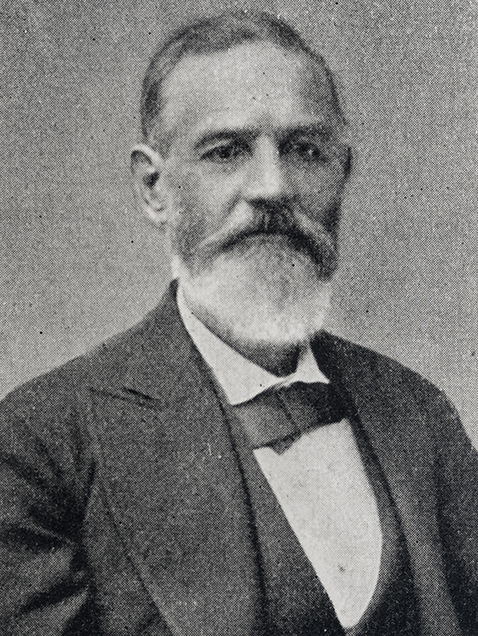
- "MUD Morass: Too Many Special Districts Proved Incapable of Handling Hurricane Harvey," Houston Chronicle, November 7, 2017
- 15-Point Flood Control Proposal, Harris County Judge Ed Emmett, October 25, 2017
- "Harvey Reveals Flaws of Government by MUD," Houston Chronicle, October 19, 2017
- "MUDs' Disaster Preparedness and Hurricane Harvey," Association of Water Board Directors, October 2, 2017
- 30 Texas Administrative Code §§ 293.41 - 293.61, Issuance of Bonds, Texas Commission on Environmental Quality
- "Municipal Utility Districts Have Sweeping Power to Sell Bonds, Levy Taxes," Houston Chronicle, August 20, 2016, updated February 15, 2017
- Interim Report, 78th Legislature (Charge 2 – Special districts, including water districts, and authority to tax and issue bonds), Senate Committee on Intergovernmental Relations, October 2002
- Bond Review Board Database Search, Texas Local Governments FY 2016 (Issuer Type: Water District), Texas Bond Review Board
- Local Publications (Local annual reports, all local government debt outstanding, trends in local government debt, including water districts), Texas Bond Review Board
- Water Districts, Water District Database (WDD), Creating or Managing a Water District, Texas Commission on Environmental Quality
- Invisible Governments: Special Purpose Districts in Texas, Texas Senate Research Center, October 2014
- Interim Report to the 82nd Texas Legislature, House Select Committee on Special Purpose Districts, January 2011
- Texas Local Government Code, Chapter 375, Municipal Management Districts in General, Municipal Management Districts in General (Amended by SB 1987, § 3, 85th Legislature, R.S.)
- Texas Government Code § 313.006, Notice for Laws Establishing Municipal Management Districts (Amended by SB 1987, §§ 1-2, 85th Legislature, R.S.)
- "The City with (Almost) No Limits," UrbanLand Magazine, August 30, 2017 (republished from 2015)
- Interim Report to the 85th Texas Legislature (Charge 1 – Municipal Management Districts and/or Improvement Districts), House Committee on Special Purpose Districts, December 2016
- Interim Report to the 85th Legislature (Charge 4 – Municipal Management Districts), Senate Committee on Intergovernmental Relations, December 2016
- Texas Municipal League Economic Development Handbook, Texas Municipal League, Updated January 2015
- Invisible Governments: Special Purpose Districts in Texas (Municipal Management Districts, Tables), Texas Senate Research Center, October 2014
- Interim Report to the 82nd Texas Legislature (Charge 8 – Municipal Management Districts; Appendices H-1 to H-2), Senate Committee on Intergovernmental Relations, December 2010
- "Officials: Harvey Recovery Complicated by Cost and Lack of Temporary Housing," Houston Chronicle, November 28, 2017
- "How Much Damage Did Harvey Do to Texas Homes? There May Never Be an Exact Answer," Texas Tribune, November 22, 2017
- "HUD Provides $5 Billion To Help Texas Recover From Harvey," Governor Greg Abbott, November 17, 2017
- 2017 Disaster and Emergency Resource Page for Housing Counselors - Hurricane Harvey, HUD Exchange, U.S. Department of Housing and Urban Development
- Texas Rebuilds, Hurricane Harvey (Housing information), Texas General Land Office
- "'Bathroom Bill' Would be Bad for Texas' Economy, Business Leaders Say," Texas Tribune, November 15, 2017
- "Bathroom Bills Put Texas at Risk, Business Leaders Tell Straus Panel," Austin American-Statesman, November 15, 2017
- Taxes and Economic Competitiveness (Presented to the House Committee on Economic Competitiveness), Texas Taxpayers and Research Association, November 15, 2017
- Interim Hearings - Week of November 13, 2017, House Select Committee on Economic Competitiveness, Legislative Reference Library, November 6, 2017
- Alamo Master Plan (Graphics, frequently asked questions, and master plan synopsis), City of San Antonio / Texas General Land Office / Alamo Endowment
- Adult and Juvenile Correctional Populations: Monthly Report, Legislative Budget Board, November 2017
- Family and Protective Services, Department of; Summary of Recommendations – Senate, Section 3, Item 3, Fiscal Year 2017 Critical Needs Funding, Legislative Budget Board, January 27, 2017
- Letter to Commissioner Hank Whitman, Department of Family and Protective Services (approval of additional funds and FTEs in fiscal year 2017), Legislative Budget Board, December 1, 2016
- Budget and Finance (Monthly financial reports, including critical needs initiative), Texas Department of Family and Protective Services
- Hurricane Harvey's Fiscal Impact on State Agencies, Testimony to the Senate Committee on Finance, Legislative Budget Board, October 24, 2017
- Hurricane Harvey - The Fiscal Toolbox, Texas Taxpayers and Research Association, September 2017
- Insurer Participation on ACA Marketplaces, 2014-2018, Kaiser Family Foundation, November 10, 2017
- Health Insurance Coverage in the United States: 2016, U.S. Census Bureau, September 2017
- "The Health Insurance Gap After Implementation of the Affordable Care Act in Texas," Texas Medicine, March 2017
- Insurance Coverage, Access to Care, and Medical Debt Since the ACA: A Look at California, Florida, New York, and Texas (Issue Brief), The Commonwealth Fund, March 2017
- A Study of Affordable Care Act Competitiveness in Texas, Texas A&M University, Center for Health Policy at the Brookings Institution, February 2017
- Texas: Health Insurance & Managed Care, Texas: Medicaid & CHIP, Kaiser Family Foundation
- "Blindsided: Patients Squeezed in Feud between Doctors, Insurance Companies," Houston Chronicle, November 19, 2017
- Surprise! Out-of-Network Billing for Emergency Care in the United States (Working Paper), National Bureau of Economic Research, July 2017
- Balance Billing by Health Care Providers: Assessing Consumer Protections Across States (Issue Brief), The Commonwealth Fund, June 2017
- A Texas-Sized Problem: How to Limit Out-of-Control Surprise Medical Billing, Center for Public Policy Priorities, February 2017
- Surprise Medical Bills, Texas Department of Insurance
- Non-Medical Switching Bills Announced in Three More States, U.S. PAIN Foundation, February 27, 2017
- Promoting Access to Affordable Prescription Drugs: Policy Analysis and Consumer Recommendations for State Policymakers, Consumer Advocates, and Health Care Stakeholders, National Association of Insurance Commissioners (NAIC) Consumer Representatives, Consumers Union, August 2016
- Does a 'One-Size-Fits-All' Formulary Policy Make Sense?, Health Affairs Blog, June 2, 2016
- Insurers Making Prescription Drug Formulary Changes, Connecticut Office of Legislative Research, May 31, 2016
- Essential Health Benefits Prescription Drug Standards, Issue No. 1 – Formulary Transparency, National Health Law Program, May 8, 2015
- "The Changing Role of Pharmacy Benefit Administration in Managing Chronic Conditions," Benefits Quarterly, First Quarter 2014
- The Effect of Cost-Sharing on the Utilization of Prescription Drugs for Chronically Ill Patients (Dissertation), Pardee RAND Graduate School, September 2005
- Texas Insurance Code §§ 1369.051-1369.057, Coverage of Prescription Drugs Specified By Drug Formulary
- 2017 Recent State Pharmaceutical Laws to Watch: An Interim Progress Report (Includes HB 1227, 85th Legislature, R.S.), National Conference of State Legislatures, June 2017
- "The 'Troubles' With Pharmacy Benefit Managers," Regulation (CATO Institute), Spring 2017
- Transparency and Disclosure of Health Costs and Provider Payments: State Actions, National Conference of State Legislatures, March 2017
- Pharmacy Benefit Managers: Market Power and Lack of Transparency, The American Consumer Institute, March 2017
- Questions on Pharmacy Benefit Managers and Formularies (Includes Texas law), Connecticut Office of Legislative Research, January 11, 2017
- 2015-2016 State Legislation to Require Prescription Drug Cost and Price Transparency, National Conference of State Legislatures, November 22, 2016
- Texas Insurance Code §§ 1369.0542-1369.0544, Formulary Information and Disclosure Requirements (Amended by HB 1227, 85th Legislature, R.S.)
- 28 Texas Administrative Code §§ 21.3020-21.3034, Prescription Drug Formulary Coverage and Disclosure Requirements
- "Worried About Hackers, States Turn to Cyber Insurance," Stateline (Pew Charitable Trusts), November 10, 2017
- Cybersecurity Legislation 2017, National Conference of State Legislatures, October 30, 2017
- Interim Report to the 85th Texas Legislature (Charge 2 – Counties' cybersecurity policies), House Committee on County Affairs, January 2017
- Interim Report to the 85th Texas Legislature (Charge 1 – State agencies' cybersecurity policies), House Committee on Government Transparency & Operation, January 2017
- Interim Report to the 85th Texas Legislature (Charge 2 – Cities' cybersecurity policies), House Committee on Urban Affairs, January 2017
- Interim Report to the 85th Texas Legislature (Charge 2 – Texas businesses' cybersecurity), House Committee on Business & Industry, December 2016
- State of the States on Cybersecurity: California, Maryland, Michigan, New Jersey, New York, Texas, Virginia, Washington, Pell Center for International Relations and Public Policy, November 2015
- 83rd Texas Legislature: Interim Report (Charge 3 – Cybersecurity: SB 1597, 83rd Legislature, R.S.), Senate Committee on Government Organization, December 2014
- State Roles in Enhancing the Cybersecurity of Energy Systems and Infrastructure, National Governors Association, August 2014
- Building a More Secure and Prosperous Texas, Texas Cybersecurity, Education, and Economic Development Council, December 1, 2012
- Presentation to the Transition Legislative Oversight Committee, Texas Health and Human Services Commission, August 7, 2017
- Health and Human Services Transition Legislative Oversight Committee (Presentation), Texas Department of Family and Protective Services, August 7, 2017
- Report to the 85th Legislature, Health and Human Services Transition Legislative Oversight Committee, November 29, 2016
- Health and Human Services Transformation (Transition plan, timeline, Sunset process, and presentations), Texas Health and Human Services Commission

